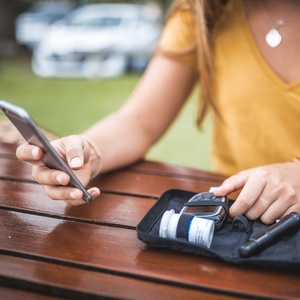
In 2009, approximately 2 million people in South Africa aged 30 years and older had diabetes, according to Diabetes South Africa (DSA). But what do these figures look like 10 years later in 2019?
The #10 Year Facebook Challenge took social media by storm this year as people from all across the globe posted photos of what they looked like in 2009 vs 2019. People’s transformations were remarkable and besides providing a good throwback, it was a stark reminder of how much can change in a mere ten years.
We decided to take up the #10YearChallenge with diabetes and see whether the transformation of its prevalence, management and treatment has been equally remarkable. From the first home blood glucose monitor that weighed about 1.8 kg in the 1970’s to the introduction of continuous glucose monitoring (CGM) in the early 2000’s, things have already moved quickly.
Here’s a breakdown of some developments in diabetes between 2009 and 2019.
2009
One of the main aims of diabetes treatment is to keep blood glucose levels within a specified target range. In 2009, this was mainly done through a blood glucose meter and a lancet device. This method, that’s still widely popular today, uses a lancet to make a fingerstick to obtain small blood specimens which is then placed in a blood glucose meter.
2010
Glucose monitors with insulin features were introduced in 2010 by Abbott Laboratories. Before 2010, patients needed to use a formula to calculate the correct dosage of insulin based on their blood glucose levels. Using automated bolus calculators minimizes errors in dose determination.
2016
In 2016, diabetes mellitus was the second leading natural cause of deaths in South Africa after tuberculosis. This showed concerning signs of more deaths associated with diabetes mellitus, particularly for females, according to the Mortality and causes of death in South Africa 2016 report.
2017
The first flash glucose monitoring system came to South Africa when Abbott Laboratories launched the FreeStyle Libre Flash Glucose Monitoring System in June 2017. This innovative technology tackles the obstacles of traditional glucose monitoring as FreeStyle Libre eliminates the need for routine fingerstick testing*.
2018
People living with Type 1 diabetes can have basal and bolus analogue insulin. In 2018, two new basal second-generation insulin were launched: Toujeo (glargine U300) and Tresiba (degludec). Both have a working time of more than 24 hours making them once daily long-acting insulin without any peaks, according to Diabetes SA.
2019
The management and treatment of Diabetes have become rather tech-savvy and clearly aced the 10 year challenge – unfortunately the prevalence of diabetes in SA didn’t. The latest figures suggest 3.5 million South Africans (about 6% of the population) now suffer from diabetes. This growing number is a common concern and awareness of lifestyle changes that can combat the onset of diabetes is crucial to shrinking these figures for the next 10 years.
*Fingersticks are required for treatment decisions when you see ‘Check Blood Glucose’ symbol, when symptoms do not match system readings, when you suspect readings may be inaccurate, or when you experience symptoms that may be due to high or low blood glucose.
This post is sponsored by Abbott Laboratories SA (Pty) Ltd. produced by BrandStudio24 for Health24.




 Publications
Publications
 Partners
Partners










